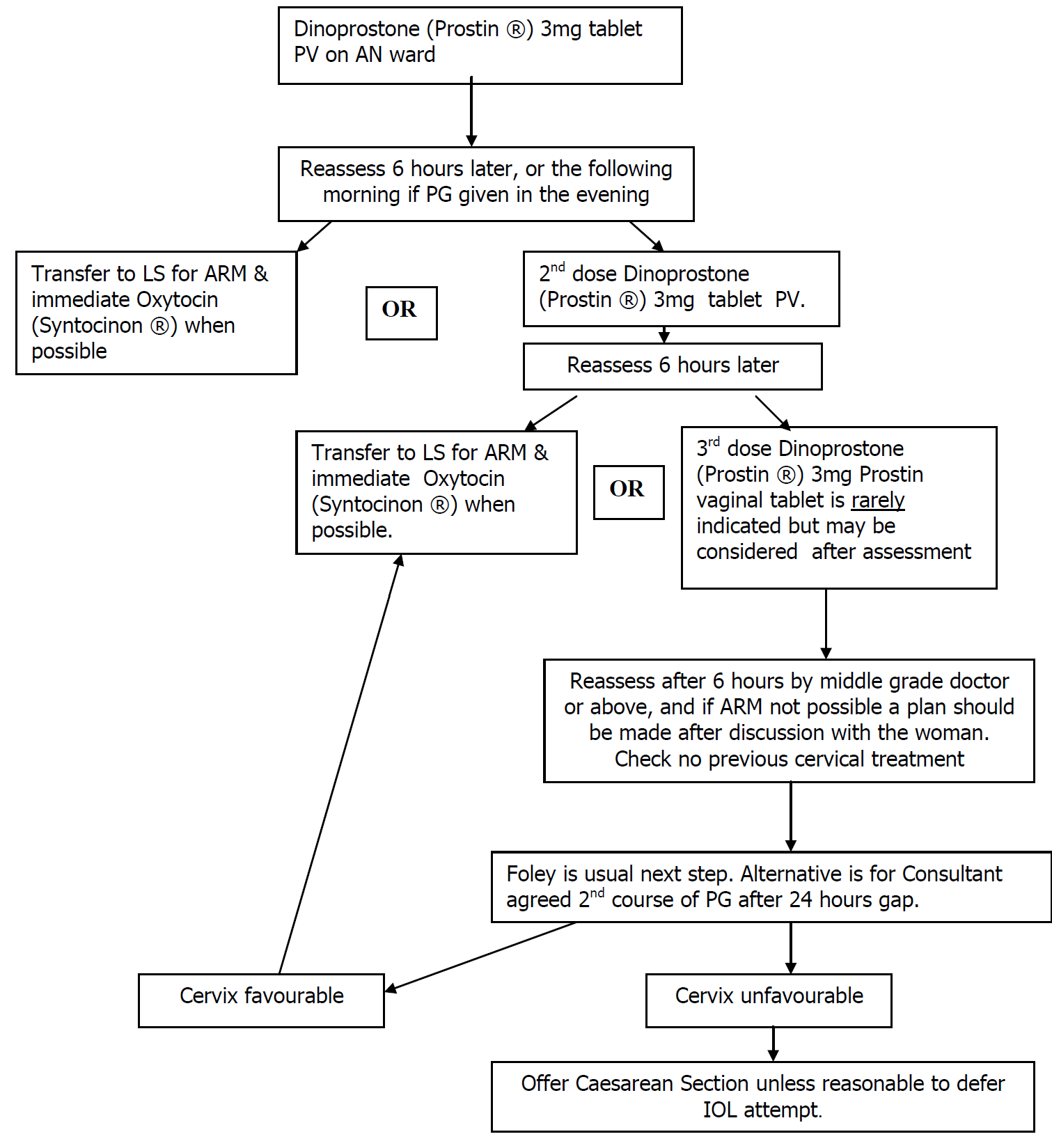Primigravida and Parous Women (excluding those withprevious CS)
- Review Case Notes and establish plan
- Confirm cephalic presentation and FH activity. If in doubt ultrasound by trained medical staff.
- Prostaglandins should be used in preference to ARM and Syntocinon in both prims & parous women with intact membranes, regardless of their cervical favourability.
- Dinoprostone (Prostin ®) 3mgs vaginal tablets is the induction agent of choice
- If the cervix is favourable for an ARM after a single dose of Prostin ® an ARM should be performed, otherwise a further dose of Prostin ® should be given. Appropriately trained midwives can administer these.
Women who are not suitable for amniotomy after 2 doses of dinoprostone.
- Remember to check patient has not had previous treatment to her cervix (e.g. cold coagulation). Occasionally insertion of a digit through the cervix is required to break down adhesions caused by such treatment.
- A further 3mg of prostin - note that this is outwith the Manufacturer's recommendations but acceptable in GGC on basis of peer practice/consensus. This may be administered by a suitably trained midwife.
Note Amniotomy is usually possible if the cervix admits a finger. Examining a patient on a Labour Ward couch, with or without lithotomy position may facilitate this. - Mechanical induction with a Foley's balloon catheter. Technique - a 12 Fg Foley's balloon is inserted aseptically through the cervical os and the balloon inflated with 10ml sterile sodium chloride 0.9% for inj. and 30ml sterile sodium chloride 0.9% for inj. injected through the lumen into the extra amniotic space. The inflated balloon should be left in situ until the next day, or until the balloon falls out.
- If amniotomy is not possible then the patient should be discussed with a senior Obstetrician (Consultant or ST7) and depending on the reason for IOL, offered:
a) 24 hours “rest” and then re-start prostaglandin.
b) Caesarean Section
- Amniotomy should be performed prior to commencement of Syntocinon infusion.
- Oxytocin (Syntocinon ®) should not be started within 6 hours following administration of vaginal Prostaglandins.



